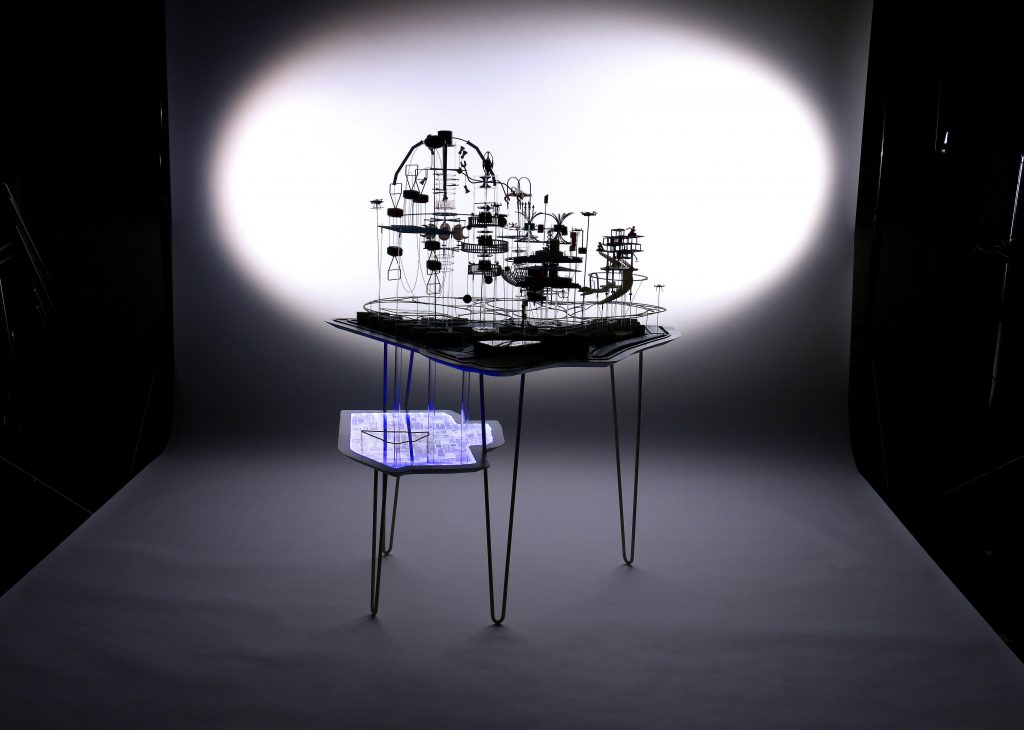
Over the past few months we have all become acutely familiar with our immediate domestic environments. Fiction writers have long constructed entire imagined worlds from their home offices, kitchens, studies, toilets, garages and bedrooms. Famously Mark Twain used a billiard’s table as his desk. Artists tend to have a more maximalist approach to the home-as-studio, where domesticity and art practice intertwine (take Lucian Freud’s studio for example). During lockdown, and perhaps well into the future, architects and designers now find themselves in a similar position. Whereas previously the architect was more likely to practice in an office or studio discrete from homelife, we are now wedded to our dwellings.
This year unit 14 will explore how aspects of our most immediate, and intimate, domestic environments impact on our most speculative architectural design ideas. We will engage, full throttle, with the practice worldbuilding: the construction of imaginary worlds – in our bedrooms. How can the simple quotidian processes and minutiae of our domestic confines be extrapolated up into proposals for new and alternative architectural worldspaces?
Worldbuilding has long been associated with fantasy epics and literature more widely, however it is increasing discussed in fields such as games design, film making, urbanism and architecture. Otherwise known as subcreation or conworlding (constructed worlds), the success of these fabrications relies on their consistent upholding of self-instigated internal rules and logic systems. Architecture has a complex relationship with worldbuilding: architects often imagine a slightly newer version of our current world, whilst being intrinsically tied to its realities. Architects also have a close association to Nelson Goodman’s notion of ‘worldmaking’ from the 1970’s: we are in the business of producing design imaginaries that act as catalysts for change in our actual-existing (but not necessarily phenomenal) world(s). It is no understatement to say that today we are living through one of a small number of moments in human history where the world yet to come, just in front of us, will radically alter from our present version. For unit 14, this is an exciting precipice to look down from: a point in time where the architectural imagination will be vital in conceiving our new post-covid worldspaces.
Unit 14’s representational vehicle of choice for worldbuilding is the architectural model: the processes of modelling and the outputting of models. Or to be more specific, the practice of worldmodelling, architectural projects as thought experiments of vast scales and complexities. As increasingly advanced BIM software becomes ever more prevalent in the profession (considered to be going 10-dimensional!), we seek to explore the potentiality of the architectural model in its manifold forms. We are interested in the architectural opportunities that emerging modelling processes and technologies afford, and we aim towards proposing new model languages and methods (physical, immaterial, co-existing and otherwise). Our models aim to be long projects: additive investments over the entire academic year. And given the current ever-shifting situation, we must be prepared to live alongside our models.
Y1 students will be asked to develop imagined worlds and building programmes in the barren yet opportunity-rich lands of the London Royal Docks, an area of London laden with infrastructure and potential, and handily close enough to us in Greenwich for a walking tour. It is the most eastern of London’s large hotel districts, a watery stretch of domestic simulacra.
Final year students will develop worldbuilding projects based on their individual themes and agendas.
__
“I think there are two types of writers, the architects and the gardeners. The architects plan everything ahead of time, like an architect building a house. They know how many rooms are going to be in the house, what kind of roof they’re going to have, where the wires are going to run, what kind of plumbing there’s going to be. They have the whole thing designed and blueprinted out before they even nail the first board up. The gardeners dig a hole, drop in a seed and water it. They kind of know what seed it is, they know if planted a fantasy seed or mystery seed or whatever. But as the plant comes up and they water it, they don’t know how many branches it’s going to have, they find out as it grows. And I’m much more a gardener than an architect.”
– George R. R. Martin